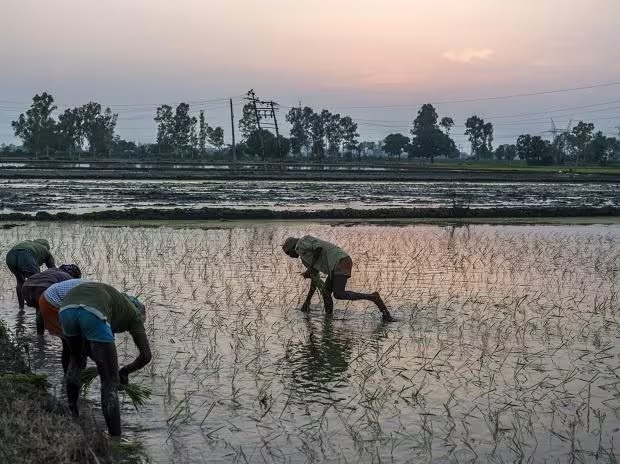Amid erratic monsoon rainfall, cultivation of essential crops such as pulses, oilseeds, and cotton declined, but the overall cultivated area increased due to a rise in paddy plantation.
According to data from the agriculture ministry released on Friday, total kharif planting increased by 4.6% compared to last year, reaching 107.8 million hectares (mh).
Paddy cultivation saw a significant boost, rising 14.3% to 39.8 mh. In contrast, cultivation of pulses fell 11% to 11.9 mh, including a 2.6% dip in tur (arhar or pigeon pea) and nearly 5% drop in urad (black gram) to 4.3 mh and 3.2 mh, respectively. Consequently, the price of tur and urad, collectively constituting two-thirds of the kharif pulses basket, rose significantly. The cultivation area for cotton and oilseeds also contracted, falling by approximately 2.6% to 12.3 mh and 1.8% to 19 mh, respectively.
According to experts, planting of pulses is unlikely to see further expansion, as most of the area has been covered. The rains in September will play a crucial role in determining the fate of oilseeds, rice and sugarcane crops. “Most of the sowing is over and 90-95% of normal area is covered. Therefore, it is not likely to affect fresh sowing and where sowing is lower, there will be no further sowing, for example pulses, Madan Sabnavis, chief economist at Bank of Baroda, said. “In September, rainfall will affect prospects of crops that require water when flowering and there can be concern for oilseeds besides rice and sugar cane.”

Additionally, experts said the monsoon rainfall in September will be crucial for crop growth and yield.. “Deficit rain in August can lead to lower yields, moisture stress and small-size bean or grain for soybean, maize and tur. It can reduce water availability for paddy fields, affecting transplanting and growth,” Alekh Sanghera, co-founder and chief executive, FarMart, said.
If the rain does not pick up soon, it could have a negative impact on agriculture and water availability at a time when water reservoir levels are dipping due to slow-paced monsoon,” Sanghera added.
After a driest and warmest August in 122 years, India Meteorological Department’s normal rainfall forecast at 91-109% brought relief to many sectors, including agriculture.
Rainfall in the June-September monsoon season drives India’s $3 trillion economy, bringing nearly 75% of the country’s annual rains which are crucial for agriculture and for replenishing reservoirs and aquifers along with meeting power demand. Over half of India’s arable land is rain fed and agriculture is among the biggest employment generators.
Read more at-https://shorturl.at/agEMQ



